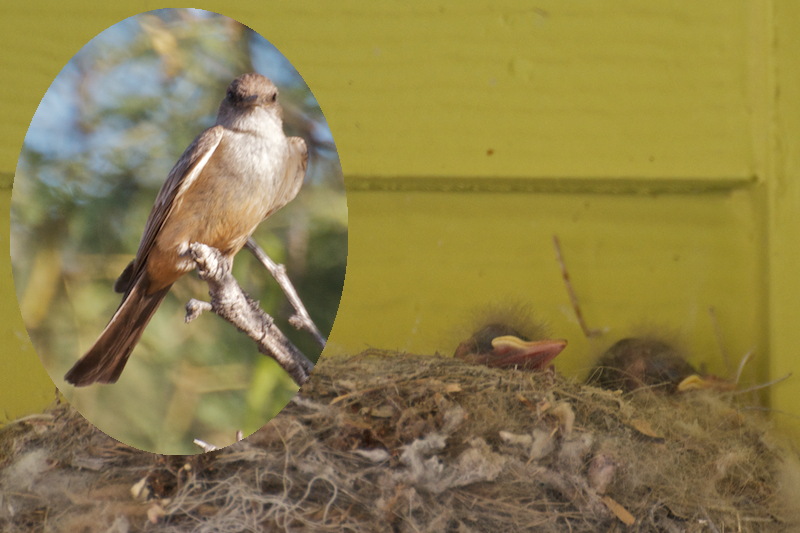
Critters, Venus, Crater Tycho
Posted: 31 May 2012
I checked on the baby bird residents on my walk to the observatory, Wednesday, 30 May 2012. Momma kept a close watch on me!

Opened the observatory at 1804 MST, 101°F. At 1810 MST, I viewed Venus, low in the west, 77X. Venus was 9.5° from the sun (according to SkySafari 3 Pro on the iPhone). Due to the sun's closeness, I kept the finderscope covered. There was some strong solar glare in the eyepiece on the 8". This might have been the last evening that I'll be able to view Venus in the 8" in the observatory.
Mounted the D7000 DSLR at prime focus + 2X Barlow Lens and used a #21 Orange filter to try to reduce atmospheric distortion affects. Used the moon to focus. Then did some HD video recordings. Venus was too distorted on any of the videos for stacking frames. I did find one frame in a video taken at 1/800sec, ISO 1600, that sort of gives the idea of the thinness of the Venus crescent:

I added the dew shield to try to reduce the off-axis solar glare but that didn't help. And the Orange filter didn't really do much to improve the view of Venus. At 1841 MST, viewed Venus, 206X with the Orange filter. Very thin crescent, but lots of glare from the nearby sun. At 1911 MST, I got my last look at Venus, 14 minutes before sunset, as Venus was getting into a tree.
At 1915 MST, viewed Saturn, 77X and 133X. Nice daylight view 10 minutes before sunset. Then went to the moon and took a tour using 133X. Switched to the visual back and mounted the D7000 at prime focus for this 1/500sec, ISO 500, image:

As I completed the lunar imaging, I saw the first Kissing Bug of the evening. It was terminated.
Switched back to the star diagonal and did some imaging of the Crater Tycho. This is a cropped image, "Hat Trick", ISO 100:

At 2021 MST, did some lunar observing, 412X. Seeing was not good but occasionally there were some nice views.
Closed the observatory at 2036 MST, 74°F. After closing the dome, I terminated two more Kissing Bugs.
Comments are welcome; use the Comments section below, or you can Email Me. Thanks.
Go to the previous report.
Return to the Cassiopeia Observatory Welcome Page.